Abstract
PPD is a common mental complication that usually occurs during the first four weeks within the first postpartum year. Those women receiving In-Vitro fertilization treatment most often undergo a certain prenatal experience that tends to create postpartum mental health apprehensions. This paper seeks looks into the effects of In-Vitro fertilization and its contribution to postpartum depression among women who undergo this treatment. The paper is based on the information available from the research previously conducted. A variety of patients were examined to determine if mothers with IVF are more likely to suffer from PPD and possible parenting difficulties. The research was conducted through based on professional information sources and statistical data collected from the research study used to further validate the evidence and outcome of this study.
Introduction
PPD is a common mental complication that usually occurs during the first four weeks within the first postpartum year. It is a complication that affects women worldwide and its prevalence varies from 5.5% to even 25%, depending on the parameters based on during the research study. The prevalence of postpartum depression varies from country to country. Because its effect is felt on a global scale, it is important that the complication be analyzed keenly through extensive and highly intensive research. Some of the effects brought by postpartum depression are prenatal depression, low self-esteem, stressful parental childcare, unstable marital relations, recurrence of the previously experienced stress, lack of social support, and other more stressful occurrences in life (Chien et al., 2009).
Women undergo difficult moments when aware of their infertility and this is likely to affect them during pregnancy. Extensive research has been conducted on this topic but focus is usually on the outcome of unsuccessful treatment of infertility. However, these studies have failed to address some of the important questions. The differences in the rate of depression in terms of the mode of concept, and the socio-cultural effects that come alongside it have not yet been intensively researched. Therefore, this paper is a system analysis of the effects brought about by the In-Vitro fertilization as a way of treating infertility. Research reveals that most mothers who conceived via In-Vitro fertilization and give birth to twins stand a higher chance of undergoing severe postpartum depression as compared to those who give birth to one child. Additionally, women who give birth naturally experience less postpartum depression when compared to those who give birth through In-Vitro fertilization (Soderquist, Wijma, Thorbert, & Wijma, 2009).
Methods
The research was conducted basing on the information available from the various academic research sources and statistical data used to give further support. This involved research carried out in various countries on women who have undergone In-Vitro fertilization and its psychological effects on them. In this context data was obtained through direct interviews with the respective women, issuing out of questionnaires and using the data available from the various medical practitioners in charge of counseling. Many researchers have conducted studies in this field and written journals and reports of the results of their findings. For comparison purposes, women who gave birth naturally were also examined in this study. They were asked the same questions as those posed to the women who had undergone In-Vitro fertilization. The responses from the two groups were compared. The various aspects examined in this context include emotional and physical reactions, marital, and social relationships. In-Vitro fertilization is a process tailored to treat infertility in women. Infertility is undesirable to any woman and those who happen to be infertile in most cases end depressed (Gold, 2008).
Study 1
Research was conducted in Taiwan at an infertility Centre between September 2007 and March 2008. A convenient sample of women who had conceived through In-Vitro fertilization was selected from the chart available at the Centre. They were called upon to fill-in the questionnaires that had been designed specifically for the study. These women were contacted about five to eight weeks after they had given birth. The questionnaires took the format of the Chinese version of Beck Inventory, second edition (BDI-II). It was made up of 21 well-structured questions that sought to investigate the symptoms of depression like pessimism, reflecting on the past failures, feelings of guilt, punishment feelings, self-dislike, internal criticism, thoughts of committing suicide, feelings of worthlessness, feeling sad, pleasure loss, uncontrolled crying, being agitated, losing interest in life, being undecided, becoming weak, inconsistencies in sleeping patterns, irritability, loss of appetite, low concentration span, feelings of general body weakness, and loss of feelings for sex (Lee et al., 2011). Every answer to a question was rated against a score ranging from 0 to 3 and therefore, the scale for the entire study ranged from 0 to 63. According to this scale, any score below 13 was treated as low depression. Those scores between 14 and 19 represented mild form of depression while that between 20 and 28 was moderate depression. However, any score above 29 was termed to be severe depression, and it was the highest form of depression in this context (Chen et al., 2007).
Another questionnaire sought to investigate the confidence of the respondent as a new mother. Its essence was to verify if the respondent was happy and ready to accept the child and treat it just like any mother would do. Besides looking at the symptoms of postpartum depression, it was also necessary looking at other variables pertaining In-Vitro fertilization. This would help come up with consistent results and avoid any bias. This questionnaire comprised of 13 questions whose consistency had been proved from the previous research studies conducted. Each question had scores ranging from 1 to 5 and therefore, the entire questionnaire had a score ranging from 13 to 65. Higher scores meant better maternal confidence and vice versa. A score of 1 indicated that respondent totally lacked self-confidence while a score of 5 signified the respondent was always confident when carrying with her maternal duties (Lee et al., 2011).
Family function was also investigated in this research. It was done by the use of APGAR (Adaptation, Partnership, Growth, and Resolve) index. The index consists of 5 questions tailored to extract information relating to adaptation within the family, partnerships, growth, feelings of affection, and resolve. The scores for every question ranged from 0 depending on the answer given by the respondent. The questionnaire was closed, and the respondents were required only to choose from the answers provided. The score for the entire questionnaire ranged from 0 to 10. All scores below 3 were regarded as severe family dysfunction; those from 4 to 6 signified moderate dysfunction while those scores above 7 represented normal family unity (Lee et al., 2011).
The interpersonal support evaluation list was used in measuring personal view of the available societal resources. This list consisted of 40 items that addressed four aspects including real help, self-motivation, self-evaluation and feeling of belonging. This list has been approved beyond any reasonable doubt and it has a good consistency. The list consisted of 16 short questions with each question providing four options. The scores ranged from 0 to 3. Zero represented a strong disagreement while 3 represented a strong agreement. For the entire questionnaire, the scale of score ranged from 0 to 48. In this regard, higher score signified better support socially. This form was based on the Chinese format and had an acceptable consistency of 0.82 (Chien et al., 2009).
When measuring the level of anticipated stress, the scale adopted measured feelings of loss of self-control and also finding it difficult to cope up with life. This questionnaire had 10 questions with each question having four optional answers. The scale per question ranged from 0 to 4 representing never, hardly, sometimes, and mostly respectively. Therefore, the overall score for the questionnaire ranged from 0 to 40. Higher scores represented higher chances of anticipated stress. This questionnaire was also based on the Chinese format and had a consistency of 0.84 (Chien et al., 2009).
Results
Initially, 71 women were selected from the chart available from the fertility Centre. Their details were obtained with consent from the relevant authority, and it was mainly for research purposes. However, out of the total, only 62 managed to finish the study. They filled-in the questionnaires supplied to them periodically and answered all questions as provided in the form. This therefore brings the response rate closer to 87%. Before commencing the study, one respondent was overwhelmed with serious depression before giving birth, and she was therefore exempted from undergoing the survey. Another respondent was challenged with austere eclampsia that required her taken in for intensive care. With the exclusion of the two patients, the final group consisted of 60 women who continued with the rest of the study to completion (Lee et al., 2011). The average period of infertility was about four to five years, depending on the respondent. However, there were no extreme variations and all the respondents seemed to have almost similar cases of infertility. The frequency of the In-Vitro fertilization cycles averaged 1.78 for the whole group. In this category of respondents, 25% had their embryos reduced when still pregnant, 83% had given birth through cesarean method while 66% had developed complications in their pregnancies. From data obtained, most of the respondents had both multiple and preterm births. The effect of postpartum depression was about 27%b with mild cases summing to 17%, moderate cases 7% and the severe ones reaching only 2%. This shows that even though there were incidents of postpartum depression, severe cases of the same were not common among the respondents.
There was no significant relationship between the length of infertility and postpartum depression (Chen et al., 2007). However, the results obtained indicate a closer relationship between the regularity of In-Vitro fertilization cycles and postpartum depression. When analyzed further, it was found that respondents who had more than three cycles of IVF stood a higher chance of undergoing postpartum depression as compared to the other women who had less. Additionally, those women who had given birth through the cesarean method scored higher in postpartum depression as compared to those that had given birth naturally. There was no close relationship between multiple births with the postpartum depression incidences. This means therefore that multiple births do not necessarily lead to postpartum depression (Lee et al., 2011).
The scores obtained revealed that there was a closer relationship between the postpartum depression and the regularity within which IVF is administered, family functions, societal help, and anticipated stress. Postpartum depression is not in any way affected by age, gestational age, duration of infertility, and maternal confidence (Lee et al., 2011).
Table 1: mean scores of instruments (Lee et al., 2011)
Table 2: Demographic data of participants (Lee et al., 2011)
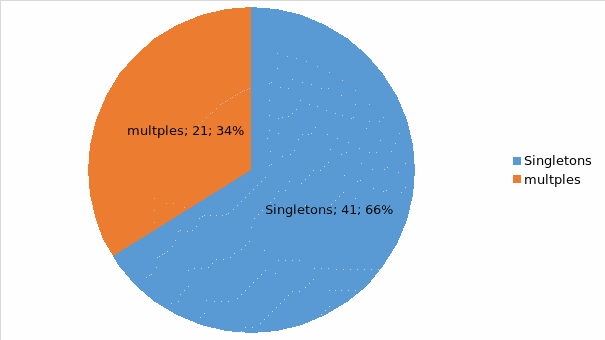
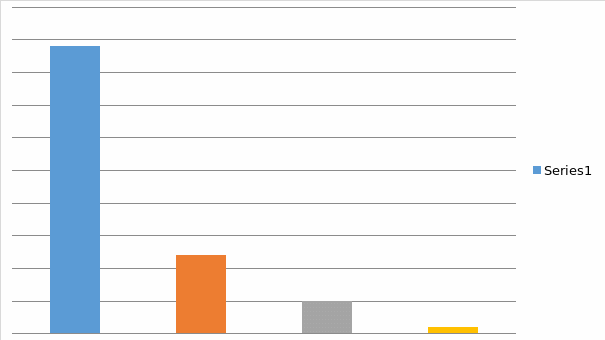
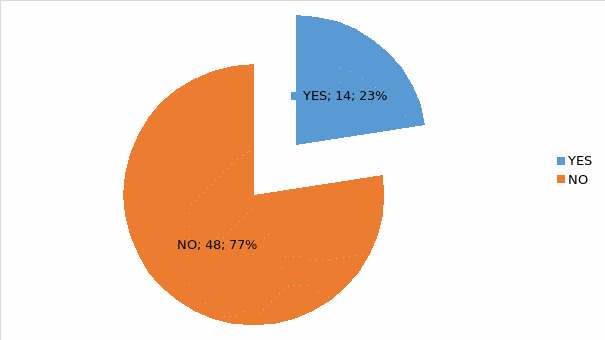
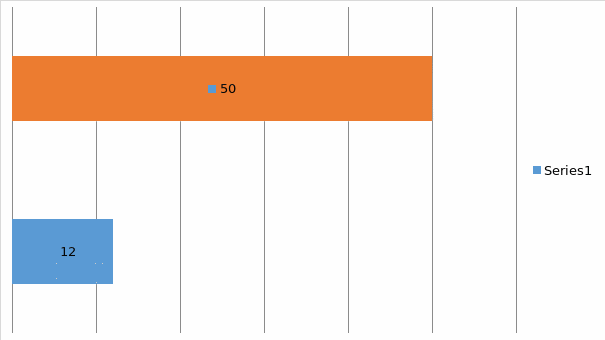
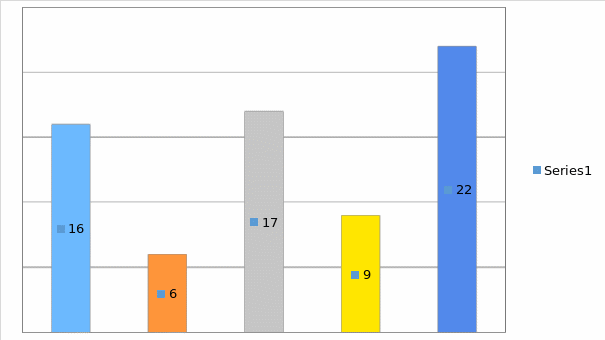
Study 2
A similar study was conducted the same year but this time among women who had conceived naturally. The researchers obtained details of pregnant women and had been attending clinical inspections at the Centre for at least six months. Similar questionnaires as those used for women who conceived through IVF were used. As in the above study, the questionnaires were mailed to them between three to four weeks after they had given birth (Chien et al., 2009). The study was mainly meant to compare the cases of postpartum depression between women who had conceived naturally and those that had conceived via In-Vitro fertilization. There were five questionnaires for the study customized to measure depression symptoms, maternal confidence, family function, interpersonal support, and the level of anticipated stress among these women. The structure of the questionnaires was similar to the one used in study 1 above. The Chinese version was of the questionnaire was used. The questions within the form were very similar. In a nutshell, study 2 was similar to study in all aspects except that the respondents in study 2 were women who had conceived naturally as opposed to those of study 1 that had conceived by means of In-Vitro fertilization (Rada & Shenassa, 2011).
Results
In this study, 67 women were selected from the records available at the clinical Centre for maternity. The study was conducted in Taiwan among the Taiwanese women. Out of this number, 54 completed the study. Some of the women exempted from the study had developed complications during their pregnancy and therefore, it was difficult for them to be monitored closely. Others suffered severe depressions after giving birth and had to be attended to medically. Another group of respondents exempted from undertaking the study were those that complications while giving birth and required special attention and medication thereafter. In this group, 37% of the women were giving birth for the first time while the remaining had given birth at least once in their lifetime. The average age for the respondents was 32 years and the range from the oldest to the youngest was about 7 years. In this group, 57% of the respondents gave birth by cesarean while 32% had developed complications during their pregnancies. The cases of embryo reduction were not reported in any of the respondent under this study. The incidents of postpartum depression were about 17% with no cases of severe depression. Moderate cases were the most common and were about 12% while mild cases were 5% (Chien et al., 2009).
Women who had given birth through the cesarean method stood a higher chance of suffering from the postpartum depression as compared to those that gave birth naturally. Cases of postpartum depression in women who had given birth through the cesarean method were about 43% while for those that had given birth naturally, it was about 7%. From the data collected, 23% of the women had multiple births. However, the study could not establish any significant difference in postpartum depression among those that had multiples to those that had singletons. Among other variables measured in this study, there was no relationship between the age of the respondent and the incidences of postpartum depression. Both the older and the younger stood equal chances of undergoing depression and there was no significant consistency in the occurrences of such incidences (Chen et al., 2007). The results obtained from this study do not in any way conflict with those obtained from study 1 based on the theoretical knowledge available. There was consistency in the results obtained during the study. In addition, there were no cases of abnormalities in the data collected, thus implying that the study was done accurately and to full precision.
When the results from study 1 and study 2 are compared to similar studies conducted in other countries like China, United States, and Canada, there are similarities. The data is also consistent with the data obtained from the above countries. This therefore, shows that the results obtained are trustworthy and qualify to be used as a basis for making conclusions. However, it is important to mention that the results from the two studies, despite being consistent, differed because they involved different groups of respondents. Study 1 was the main study and it sought to verify the effects of In-Vitro fertilization and its contribution to postpartum depression. Because comparison had to be drawn between the IVF mothers and those that had conceived naturally, study became important and had to be conducted as a control for comparison purposes (Chien et al., 2009).
Table 3: Mean scores of instruments (Chien et al., 2009)
Table 4: Demographic data of participants (Chien et al., 2009)
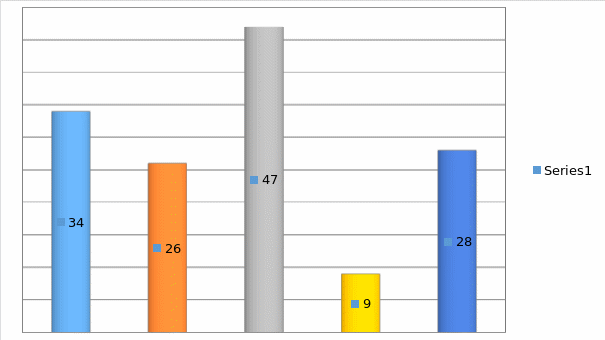
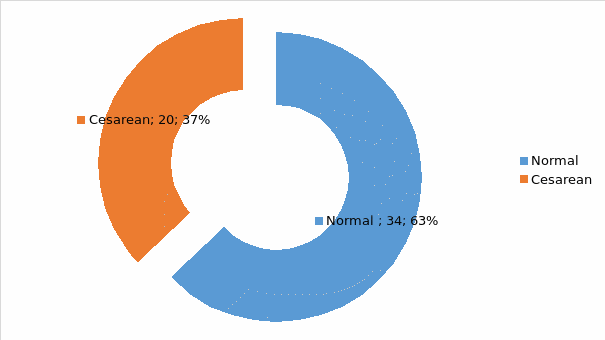
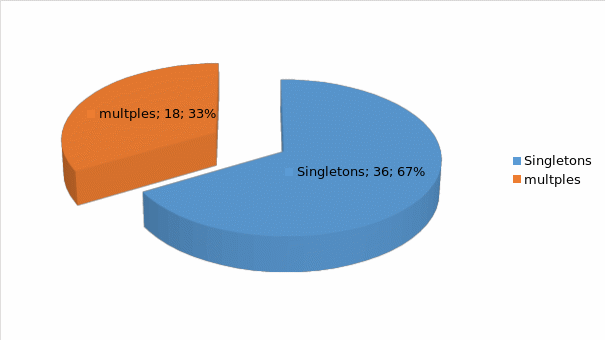
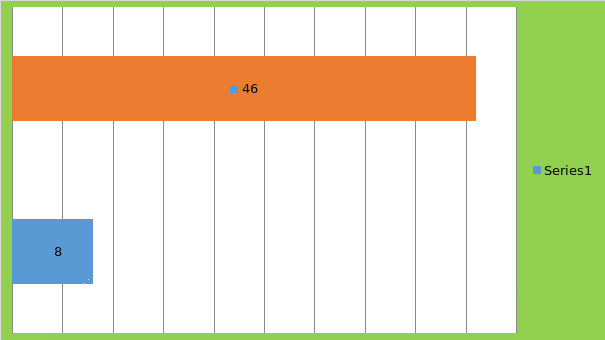
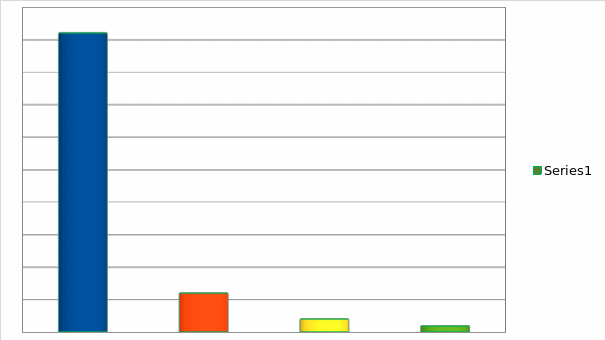
Assumptions
During the study, assumptions were made, especially concerning issues that were beyond control. For instance, the filling-in of the questionnaire largely depended on the honesty of the respondent. As seen in the preceding sections, the two studies largely depended on the questionnaire data and therefore the level of accuracy is determined by the level of honesty by the respondents when filling (Giardinelli et al, 2011). Therefore, it was assumed that the respondents will be as honest as possible when filling the questionnaire. Some data about the respondents was directly obtained from the records at the fertility and clinical Centers for studies 1 and 2 respectively. It was assumed that the information provided was beyond any reasonable doubt accurate and that the practitioners responsible were knowledgeable enough. The last assumption viewed postpartum depression as an aspect that was complex and multi-dimensional. This explains why many variables were used (Giardinelli et al, 2011).
Discussion and Recommendations
Postpartum depression is defined as the complication or depression that occurs in mothers two or more weeks after they have given birth. The postpartum period last for a maximum of two years within which mothers are likely to experience this form of a depression. PPD ranges from severe cases to mild cases. Therefore, it is a condition of concern, especially for those mothers who have undergone In-Vitro fertilization. However, this does not mean that those women who have conceived naturally do not undergo the depression. This also does not mean that women who have conceived naturally do not experience extreme levels of PPD. As illustrated in the section above, PPD is influenced by a number of factors and its effect on both the mother and the child vary, depending on the severity of the condition (Lee et al., 2011).
Generally, women stand a greater risk of undergoing minor or major depression during their child bearing period. This is, especially after incidences of infertility. Giving birth by cesarean method is not desirable as it derails those undergoing it psychologically and at times may result into disorders that may interfere with the parental duties of the mother toward newborn babies. This is because the respective patients might be required to spent a longer than anticipated time in hospital while undergoing special medication (Vilska et al., 2009). This experience is stressful to most mothers and the two studies conducted confirmed that postpartum depression incidences were higher in mothers who had given birth via cesarean means. It is therefore a challenge to the midwives and other health practitioners in this field to ensure proper planning pertaining prenatal, postnatal, and intraoperative care as a sure way of preventing disorders. Prior postpartum care should be adequately considered to avoid cases of postpartum depression. In this regard, parenthood sessions should be conducted early enough before birth as a way of preparing pregnant women for the parental role awaiting them. It is during such sessions that couples are trained and informed of the various issues that might emanate before, during, and after birth with possibilities of cesarean birth inclusive (Lee et al., 2011).
From the results presented above for both study 1 and 2, it is evident that women who undergo IVF are prone not only to postnatal but also prenatal distress when compared to those that conceive naturally. This is because infertility causes depression in women and even after they are assisted to conceive, these feelings do not completely leave them. They still believe they are infertile. In some cases, IVF fails, and this forces some of the women to repeatedly undergo the treatment. Another research conducted shows that women who undergo repeated IVF are likely to suffer from severe depression as compared to those who only underwent the treatment once and conceived. Another related study conducted in China indicate that those women who had undertaken multiple IVF treatment scored higher in depression tests had low self-esteem and were psychologically derailed (Łepecka-Klusek & Jakiel, 2007).
Therefore, based on both quantitative and qualitative data analysis, it is true that IVF has serious psychological implications on women. There is a stronger relationship between the number of medical interruptions with the incidents and severity of postpartum depression (Harf-Kashdaei & Kaitz, 2007). Before administering any IVF treatment, it is highly important that the respective health practitioners and midwives take time to study their patients, especially their history of infertility. This will help verify whether they have had the treatment before or it is their first. When this is known in advance, it will make it easier to come up with better remedies to curb occurrence of any form of postpartum depression. Mostly, attention is given to the physiological needs of the mothers after birth and less is considered. Just as important as the physiological needs of the new mother are, so are the psychological and physical needs (Lee et al., 2011). Therefore, midwives should consider all the needs of the mother starting with the physiological, psychological, and the physical needs when making prior preparation before birth.
In reference to social support, this study has revealed that the former has a larger impact on the incidents of postpartum depression. Where mothers do not receive support from their families, friends, communities or other people within their social circles, depression might develop. To even take it to a higher level, where patients anticipate any form of isolation from the society during pregnancy might also result into depression during and after birth. Women who conceived by IVF need not only social support but also professional support. This is because that they spent more energy and time taking care of their babies and accepting the reality that they are mothers. It should be the obligation of every midwife and medical practitioner in charge of these patients to ensure that, much emphasis is given on family function and social support when preparing such mothers (Hammarberg, Fisher, & Wynter, 2008).
Limitations
The groups used in carrying out the research study were done carefully and therefore some level of bias can be detected because the whole exercise of selection was selectively done. The two studies conducted adopted the Chinese questionnaire BDI-II that is not likely to be applied when carrying out clinical research. This study recorded postpartum depression incidences for the IVF women to be 27%. This percentage is higher than any other similar research ever conducted. The most likely reason to such an inconsistency might be attributed to the BDI-II instrument used, and in this case the Chinese format was adopted. Based on this, it is recommended that any further studies conducted in a similar research should apply the Edinburgh Postnatal Depression Scale because it is highly authentic and results obtained with such a measure can be easily compared against other studies conducted globally (Lee et al., 2010).
Clinical implications
The results from study 1, which was the main study, show that 27% of the women who had undertaken the IVF treatment showed symptoms of PPD. This means that for every four women who succeed in conceiving via IVF, one among them stood a higher chance of undergoing postpartum depression. The results also show an increase in the incidences of PPD in women who undertake the IVF treatment more than once before conceiving. In addition to IVF, cesarean births, and lack or lesser social support are other major causes of PPD. Therefore, creating awareness among their patients on the possibilities of the occurrence of the disorder in advance may really help in curbing the same (Vesga-Lopez, 2008). This means that postpartum counseling should be organized early enough to prevent incidences of its occurrence among the patients. It is a complication that no one would desire even for his or her worst enemies.
Annotated Bibliography
Chen, C.M., Kuo, S.F., Chou, Y.H., & Chen H.C. (2007). Postpartum Taiwanese women: their postpartum depression, social support and health promoting lifestyle profiles. Journal of Clinical Nursing, 16(8), 1550-1560.
This article analyzes the various psychological challenges new mothers undergo after giving birth and how this affects them socially and economically. The article suggests some of the healthy practices that can be used to engage women after birth to fasten their recovery into the normal life without experiencing depressive symptoms. Studies were conducted to compare the incidences of PPD in women who engaged in healthy practices during pregnancy and after birth to those who never engaged into such practices. Healthy practices included social support from the family and counseling sessions to them. The results obtained in this article show higher incidences of PPD in those women who never engaged in healthy practices as compared to those who engaged.
Chien, L.Y., Tai, C.J., Hwang, F.M., Huang, C.M. (2009). Postpartum physical symptoms and depressive symptomatology at 1 month and 1year after delivery: a longitudinal questionnaire survey. International Journal of Nursing Studies, 46(9), 1201-1208.
This article provides vast information on the effects of postpartum depression among women in Taiwan between one month and one year after birth. The paper is an in-depth analysis of incidents of both the physical and the depressive symptoms. Both symptoms were found to be more prevalent during the first month after birth than at any other time.
Giardinelli, L., Innocenti, A., Benni, L., Stefanini, M.C., Lino, G., Lunardi, C., Svelto, C., Afshar, V., Bovani, R., & Castellini, G. et al. (2011).Depression and anxiety in perinatal period: prevalence and risk factors in an Italian sample. Archives of Women’s Mental Health; 15(1), 21-30
This journal evaluates the prevalence and associated risk factors related to perinatal depressions and anxieties. Major risk factors associated with postpartum depression including psychological complications during pregnancy and the artificial reproductive techniques were evaluated. It was found that psychological complications prior and during pregnancy have a stronger effect on postpartum depression. There is also a close relationship between antenatal depressive symptoms and postnatal depressive symptoms in terms of the frequency of their occurrence.
Gold, J.K. & Marcus, M.S. (2008), Effect of maternal mental illness on pregnancy outcomes, Expert Review of Obstetrics & Gynecology; Vol. 3, No. 3, Pages 391-401
This paper is a detailed review of the prevalence of psychological complications during pregnancy and the resultant effects on the pregnancy outcomes. It is found that maternal depression among other psychological disorders during pregnancy lead to lower birth weight in children as well as increasing the risks of premature births. The paper also discusses fundamental principles for psychiatric treatment of mental disorders during pregnancy.
Hammarberg, K., Fisher, J.R.W., & Wynter, K.H. (2008). Psychological and social aspects of pregnancy, childbirth and early parenting after assisted conception: a systematic review. Human Reproduction Update, 14, 395-444.
This article provides intensive information on the emotional well-being of new mothers before and after giving birth. This is specifically for those women who conceive by IVF. It is concluded that IVF has serious implications on women and this paper analyzes some of the negative influences of IVF both psychologically and physically.
Harf-Kashdaei, E., & Kaitz, M. (2007). Antenatal moods regarding self, baby, and spouse among women who conceived by In-vitro fertilization. Fertilization & Sterility, 87(6), 1306–1313.
This article analyzes the various psychological experiences women undergo during pregnancy and the first year of parenting. This is deemed to be the most difficult moment in the life of women and if care is not taken, it is the time when serious psychological disorders develop. The paper analyzes the various options available to curb such occurrences. The main focus is on the women who conceive by IVF.
Lee, S.H., Lee, M.Y., Chiang, T.L., Lee, M.C., & Lee, MS. (2010). Child growth birth to 18 months old born after assisted reproductive technology—results of a national birth cohort study. International Journal of Nursing, 56(2), 137-189.
This article provides information on the effects of IVF to the child and analyzes complications or disorders developed in children as a result of using this method. The results from the research conducted showed that there were certain disorders like the newborns being underweight or overweight. Though there were minor complications, it is concluded that the rate of growth among children conceived by IVF was similar to those born from naturally conceived pregnancies.
Lee, S., Liu, L., Kuo, P., & Lee, M. (2011). Postpartum depression and correlated factors in women who received In-Vitro fertilization treatment. The journal of Midwifery & Women’s Health, 56(4), 347-352
This article analyzes the effect of IVF in women who have conceived by such means. It gives an assessment of the relationship between IVF and postpartum depression. Various element related to postpartum depression have been evaluated in the paper and comparison made to those women who naturally conceive. It is found that postpartum depression incidents are more among women who conceive by IVF than those who naturally conceive.
Łepecka-Klusek, C., & Jakiel, G. (2007). Difficulties in adaptation to pregnancy following natural conception or use of assisted reproduction techniques: a comparative study. European Journal of Contraceptive Reproduction Health Care, 12(1), 55-57.
The article is a practical evaluation of pregnancy difficulties among women who conceive through ART method. The paper reviews the effects of ART effects and the associated difficulties during pregnancy among the women. In conclusion, it is found that women who conceive through ART have difficulties adapting to their pregnancies compared to those who conceive spontaneously. Other major causes to these difficulties were found to be age, the socio-economic status, and frequent disruptions from work.
Soderquist, J., Wijma, B., Thorbert, G., & Wijma K. (2009). Risk factors in pregnancy for post-traumatic stress and depression after childbirth. BJOG, 116(5), 672-680.
This journal provides information on the study conducted to investigate the various effects of postpartum depression. It also analyzes some of the causes leading to the condition and how they are related. The results obtained from this study showed that the cause factors to PPD were interrelated and the best way to prevent them would be during pregnancy. The article concludes that if proper remedies are considered during pregnancy, the chances of the new mothers undergoing the depression will be minimal.
Rada, K. D. & Shenassa, E.D. (2011).Prenatal health behaviors and postpartum depression: is there an association? Archives of Women’s Mental Health, 15(1), 31-37
This article examines the relationship between the prenatal behaviors and postpartum depression among women. Certain behaviors have been evaluated including cigarette smoking, caffeine intakes, and consumption of vitamins during the first eight months after birth. The symptoms of postpartum depression are discussed and the effect caused on the babies. It is concluded that postpartum depression in mothers has a direct effect on the child.
Vesga-Lopez, O., Blanco, C., Keyes, K., Olfson, M., Grant, B.F., & Hasin, D.S. (2008). Psychiatry disorders in pregnancy and postpartum women in the United States. Archives of General Psychiatry, 65(7), 805-815.
This article provides an in-depth analysis of various symptoms leading to postpartum depression among pregnant women based on the previous pregnancy status. Some of the aspects that were evaluated include substance abuse and alcohol related disorders among pregnant women in the United States. It is found that depressive symptoms are less during pregnancy compared to after birth. The postpartum period was found to have higher incidents of depression than during pregnancy.
Vilska, S., Unkila-Kallio, L., & Punamaki, R.L., et al. (2009). Mental health of mothers and fathers of twins conceived via assisted reproduction treatment: a 1-year prospective study. Human Reproduction, 24(2), 367-377.
This journal provides information on the study conducted to investigate the psychological implications of assisted reproduction treatment (ART) on mothers who give birth to twins. A comparison is made with those mothers who give birth to the singletons. In addition, the research assessed the effects of such outcomes not only to the mother but also to the newborn child. The paper concludes that there exists a relationship between the PPD incidences and twin births. In conclusion, mothers who give birth stand a higher risk of undergoing PPD as compared to the mothers of singletons. The key words used in this research are assisted reproduction treatment, twins, depression, anxiety, and prematurity.